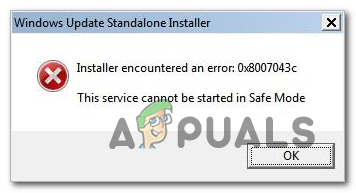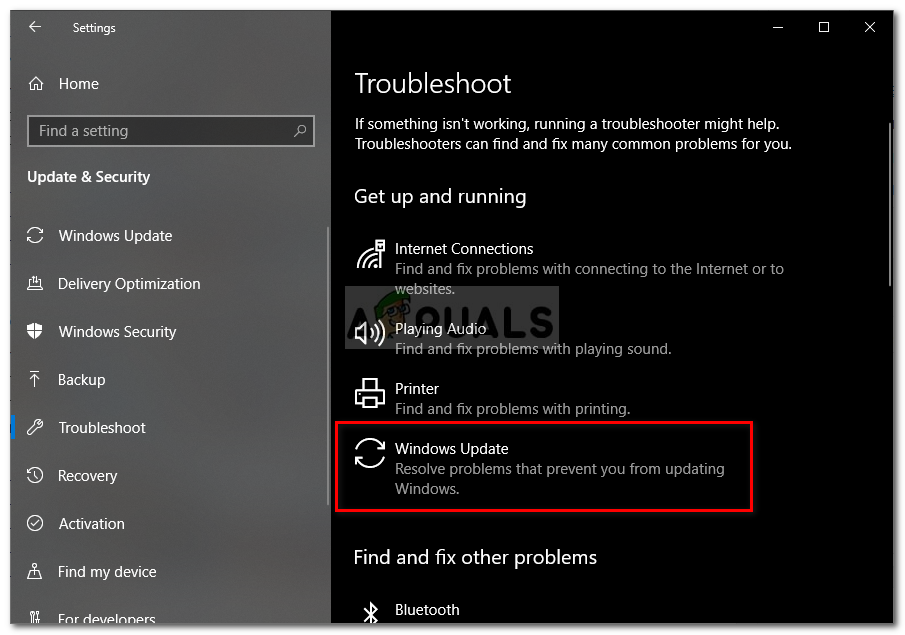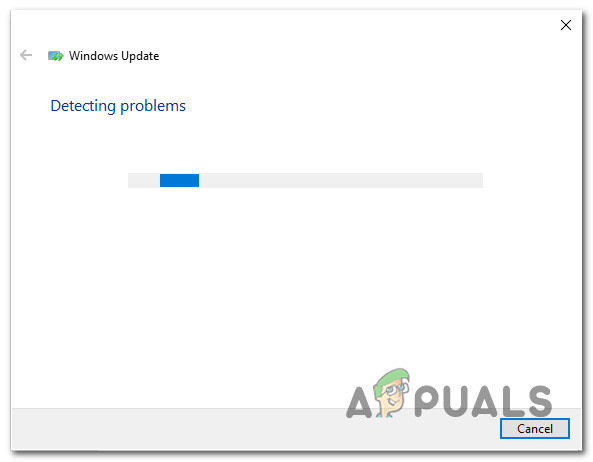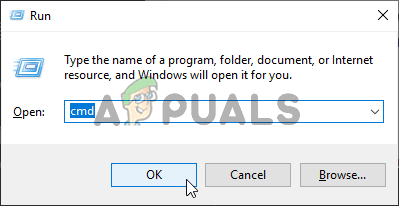What’s causing the Windows Update Error 0x8007043c?
We investigated this particular issue by looking at various user reports and by trying out the different repair strategies that are often recommended by other users that found themselves in a similar situation. As it turns out, several different situations might be responsible for the apparition of this issue. Here’s a shortlist of potential culprits that you could deal with: If you’re encountering the same issue and one of the scenarios above seemed applicable, this article will provide you with several troubleshooting steps that should allow you to get to the bottom of the issue. Down below, you’ll find a collection of potential fixes that other users in a similar situation have successfully used to resolve the error code 0x8007043c. If you want to remain as efficient as possible, we advise you to follow the instructions in the same order that we arranged them in (via efficiency and severity). Eventually, you should stumble upon a fix that will resolve the issue regardless of the culprit that’s causing the problem. Let’s begin!
Method 1: Running the Windows Update troubleshooter (Windows 10 only)
According to several different user reports, this particular issue can very well occur due to a bad Windows update that your OS might be trying to install even though it’s not compatible with your operating system version. If this scenario is applicable, you are in luck since Microsoft already released a hotfix for this problem. To take advantage of it, all you need to do is run the Windows Update troubleshooter. This automated utility will automatically take care of the incompatible driver if it determines that the scenario is already covered by one of the repair strategies. Several Windows 10 users have managed to resolve the 0x8007043c error code by running the Windows Update troubleshooter and applying the recommended repair strategy. If you didn’t know, the Windows Update contains a selection of repair strategies that should be enforced automatically if a problem that’s already covered is discovered. Here’s a short guide on running the Windows Update troubleshooter: If you’re still encountering the 0x8007043c error when trying to install a Windows update, move down to the next method below.
Method 2: Eliminating 3rd party interference (if applicable)
Another probable cause that might trigger the 0x8007043c error is an overprotective 3rd party Anti-virus software that will end up blocking the external communications between your PC and the Windows Update servers. This typically occurs due to a false positive – your AV suite believes that the internet network has been compromised. AVAST, McAfee, Comodo, and Sophos are the most likely 3rd party culprits that might cause problems (but there could be others that we failed to identified). If you’re using a 3rd party AV suite and you suspect that this issue might be applicable, you should be able to resolve the issue either by disabling the real-time protection or by uninstalling the suite altogether and reverting to the default security program (Windows Defender). Of course, the procedure of disabling the real-time protection will end up being different depending on which AV suite you’re actively using, but in most cases, you will be able to do it directly from the taskbar menu. After you disable the real-time protection, try to install the Windows Update that was previously failing and see if the issue is now resolved. If the same issue is still occurring, it doesn’t automatically mean that your AV suite is not causing the problem. Keep in mind that some 3rd party AV suite includes a firewall component even though it’s no apparent to the end-user. In most cases, this security mechanism will remain in place even if you disable the real-time protection. Because of this, you can only confirm that your 3rd party suite is not causing the issue by uninstalling it completely and making sure that you’re not leaving behind any leftover files that might still cause the 0x8007043c error. If you decide to go this route, follow the instructions on this article (here) to completely uninstall the AV suite and ensure that no remnant files are still causing the problem. In case you already did this to no improvement or this method didn’t apply to your scenario, move down to the next method below.
Method 3: Running DISM and SFC scans
If the methods above didn’t allow you to fix the issue or weren’t applicable, let’s investigate to see if the issue is not being caused by some type of system file corruption. As it’s been reported by several different Windows users, this issue might be triggered as a result of some system file corruption that is affecting important operating system files. If this scenario is applicable, you should be able to resolve the issue by running two built-in utilities capable of dealing with corruption instances – DISM (Deployment Image Servicing and Management) and SFC (System File Checker) SFC is better at fixing logical errors while DISM is much more focused on repairing system dependencies that are most likely to break. Because of this, we highly encourage you to run both utilities in order to maximize your chances of fixing the corrupted instances that might be causing the 0x8007043c error. Here’s a quick guide on running both SFC & DISM scans from an elevated Command Prompt: If you followed this method and you’re still encountering the same 0x8007043c error, move down to the next method below.
Method 4: Refreshing every OS component
If you followed every potential fix above and you’re still unable to install the Windows update, you’re likely system is struggling with some type of corruption that cannot be resolved conventionally. One way to resolve this problem is to reset every Windows component that might be responsible for the problem (including booting-related processes). Two ways will allow you to do this: clean install or repair install. A clean install is a quickest and most convenable solution with no prerequisites, but the major downside is you’ll suffer major data loss if you don’t back up your data in advance. All your files (images, music, video), applications, games and user preferences will be lost unless you use a backup utility first. A repair install (in-place repair) is a more tedious solution that requires you to have an installation media. But the major advantage is that only the Windows components will be reset. This means that you will be allowed to keep your data, apps, games and even some user preferences. So if you’re looking for something quick that will resolve the issue and you don’t have any important data that you’ll mind losing, go for a clean install. On the other hand, if you want to keep all your data and you want something solely focused on Windows components, go for a repair install.
Fix: Windows Update Error “We Couldn’t Connect to the Update Service”[SOLVED] One of the Update Services is not Running Properly in Windows UpdateLast Free Update For Windows 7 Released, KB4534310 And KB45343140 Are The Final…How to Update the Windows Update Agent to the Latest Version






